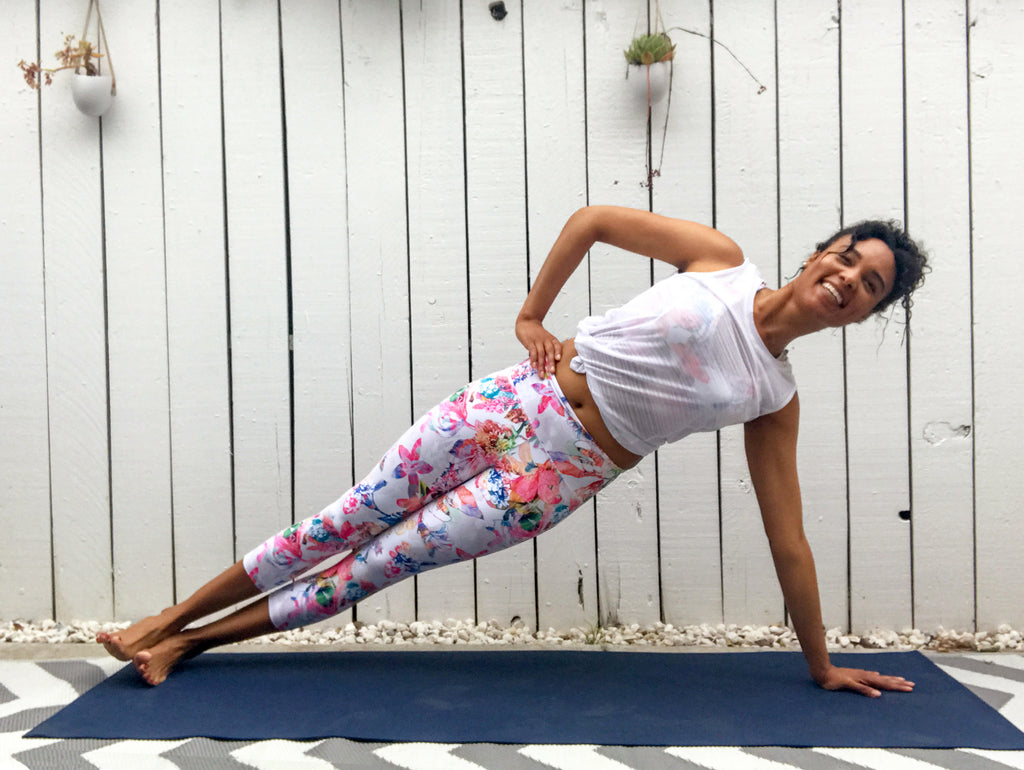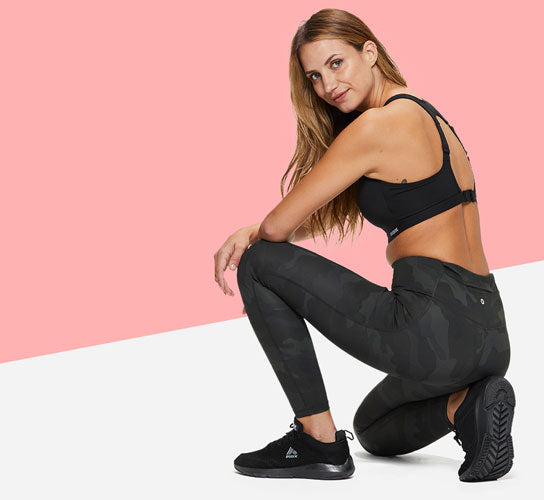
By Maya Howard, Contributor Wellness Blogger (@MayasHealthyDay)
I see it, I like it, I want it, I got it.
Now, if only those Ariana Grande lyrics rang true for an amazing set of abs, we’d all be walking around with firmer midsections!
The good news is that, even when we don’t see them, our abs are constantly present and doing their duty to stabilize our bodies. Especially when we do exercises to strengthen them.
The abdominal muscles are components of a larger group of muscles that stabilize the body, known as the core muscles. These core muscles include the rectus abdominis, the internal and external obliques, the transverse abdominis, the erector spinae located on either side of the spine, and several others.
What does anatomy have to do with getting a firmer midsection?
Each of these muscles has ways that they are optimally trained. When you include these 4 basic core exercises (and their variations) into consistent exercise routines, you create a healthy base from which the entire body becomes strong and mobile.
Here are four basic exercises to blend into your regular workout routine to build stronger abs:
The Standard Plank

In a research study that measured the muscle activation levels produced during different core exercises, the plank was found to activate abdominal muscles the most. The standard plank strengthens the rectus abdominis, the most superficial layer of the abs known as the ‘six-pack’.
Begin the exercise balanced on all fours, with wrists aligned with shoulders and knees aligned with hips. Take a deep breath in, and on the exhale brace your abs as you draw your navel in towards your spine. Maintain this abdominal brace as you lift your knees and enter the plank posture. Allow your eye gaze to stay on the ground beneath you.
Hold the plank posture for 30-60 seconds. Perform 3 repetitions. Breathe deeply while maintaining an abdominal brace and avoid arching the lower back. To advance this exercise or to accommodate for a wrist injury, complete the plank hold on your forearms.
Variations Include: Reverse Plank, Mountain Climbers, Spiderman Plank, Bear Crawls, Renegade Rows, Stability Ball Jackknife
The Side Plank

This sideways version of a plank strengthens the transverse abdominis as well as the internal and external obliques. Side planks are commonly done to target the ‘love handles’ area. However, strong obliques are also physiologically necessary for holding in the contents of the abdomen.
Begin in the standard plank posture, looking at the ground beneath you. Pick up your left hand and place it directly underneath your eye gaze. Slowly twist your hips to the right and stack your heels on top of each other until you are completely balanced on one side. Maintain your abdominal brace and lift the left ribs an inch or two higher.
Hold for 30 seconds, then repeat the side plank while balanced on the right hand. Perform 3 repetitions on each side. To advance, balance on the forearm instead of the wrist.
Variations Include: Star Plank, Rotating Plank, Side Plank with Leg Raise, Side Plank with Knee to Elbow Crunch
These next two exercises recruit the rectus abdominis, transverse abdominis, and the erector spinae muscles.
Pilates Roll-Up

The roll-up is a fundamental Pilates exercise that offers the benefits of both strengthening the abs and maintaining spinal flexibility. This exercise trains the abdominal muscles to coordinate with the spine to lift and flex the torso forward. In essence, this movement strengthens your ‘Get Out Of Bed’ muscles!
Begin this exercise lying on your back with your legs extended along the ground and arms extended behind you. Tilt your pelvic bone towards your head and draw your navel in towards your spine. (Those two movements should flatten your lower back towards the ground).
Starting with the head and then the spine, lift one vertebra at a time to roll into a seated posture. Keep your chin tucked towards your chest as you continue to round the spine in a C-shape and reach for your toes. Roll the spine back to return to your starting posture, moving slowly and allowing your abs to lower your body to the ground.
Perform 5-10 repetitions slowly.
Variations Include: Roll Up with Alternating Straight Leg Lifts, Pilates Hundreds, Teaser (aka Boat Pose)
The Ab Roll-Out

Of these 4 basic ab exercises, the ab roll-out recruits the most core muscles. Segmentally flexing and extending the spine, while balancing on an unstable surface, makes this exercise very challenging. Fitness equipment such as a stability ball, foam roller, or ab wheel is commonly used to complete this exercise.
A similar exercise is known as the Inchworm (aka walkout) is done without any equipment.
From standing, tuck your chin towards your chest. Slowly round your spine forward, one vertebra at a time, until your hands reach the ground. Bend your knees as needed. Continue to walk your hands along the ground and away from your feet until you reach a full plank posture. Hold the plank momentarily, then walk your hands back towards your feet. Slowly return to a standing posture, rolling up one vertebra at a time.
Perform 5-10 repetitions slowly.
Variations Include: Roll out using stability ball or TRX straps or ab wheel, Inchworm, Kneeling Inchworm, Stability Ball Pike, Stability Ball Reverse Crunch
Incorporating these exercises into your regular workout schedule will not only help you develop firm abs, but also develop a strong and mobile spine! Be sure to challenge yourself with the different variations, longer holds, and more repetitions as you get comfortable with the 4 basic moves.


